For many, the concept of train travel calls to mind images of a near-forgotten past. The low hiss of the steam engine as it first departs the station; the faint sound of the train whistle as it meets each stop along its journey; the ribbons of scenery that unfold to reveal untouched beauty in places both familiar and unknown—these threads have been woven together over generations to form the fabric of our most romantic travel imaginings. But for all its storied past, rail travel in America is just as viable—and incredible—today as ever before, thanks to Amtrak’s commitment to ongoing innovation, both now and in the years to come.
As America’s Railroad, Amtrak has been building our shared history for the last 50 years, first established as the National Railroad Passenger Corporation in 1970 when Congress passed the Rail Passenger Service Act. Service launched in May of 1971 with a total of 21 routes spanning 43 states—a massive undertaking that preserved the possibility of rail travel to vast swaths of the American population at a time when private railroads wanted to exit the passenger rail business. Even in its infancy, Amtrak didn’t stop there, continually implementing a variety of enhanced technologies and upgrading its entire fleet of both locomotives and passenger cars throughout the 1970s and 1980s in order to position the rail system for the coming travel demands of the 21st century.
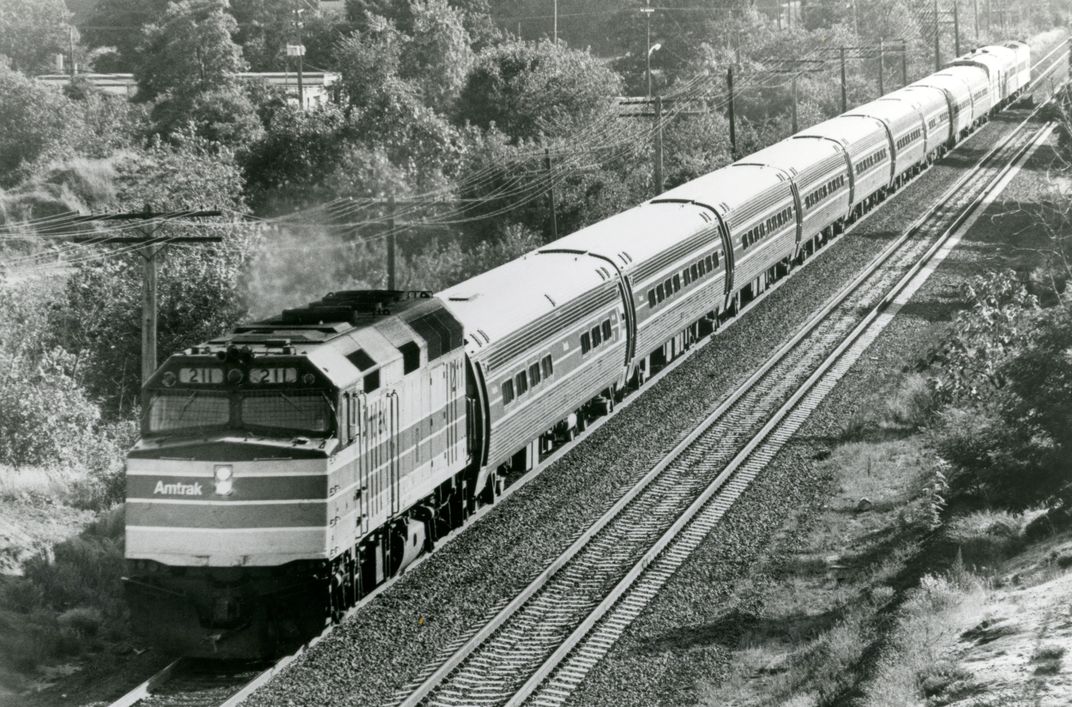
The 1990s saw even more dedicated investment from coast to coast, with the introduction of additional state-of-the-art, bi-level passenger cars and diesel locomotives that have become standard fare on long distance routes today, along with a collection of critical, state-supported trains and routes in regions with high passenger demand, such as in California, as well as the famed Metroliner service along the Northeast Corridor (NEC). Leading into the 2000s, Amtrak then brought high-speed rail to North America for the first time with the launch of its flagship Acela Express. Replacing the Metroliner and still in operation today, the Acela services the NEC between Washington, D.C. and Boston with 16 stops along the route—a compelling alternative to east coast air travel with trains that can reach speeds of up to 150 miles per hour. Additionally, the 2000s and 2010s saw a surge in state-supported services with the launches of the popular Downeaster in Maine and Amtrak Virginia services, as well as upgrades to, and expansions of the Keystone Service in Pennsylvania, Illinois Services, and Amtrak Hartford Line to provide customers with more travel options.
Today, Amtrak operates across over 21,000 miles spanning 46 states, in addition to D.C. and in Canada. With more than 300 daily trains to over 500 American destinations, it is poised to expand upon the nostalgia and modern convenience of train travel in the years to come.
"One of the things that is really impressive about now, and over the last 12 months, is that we never stopped working on this,” explains Roger Harris, Executive Vice President and Chief Marketing and Revenue Officer at Amtrak, about the timing of its latest innovations to its terminals, technology and fleet of trains. As a result of these renewed efforts, “there is this continuous flow of good news. That’s one of the real differences between Amtrak now [as compared to] historically, that we’ve been working hard on a continuous pace of improvement.”
New Acela and High-Speed Infrastructure Improvements
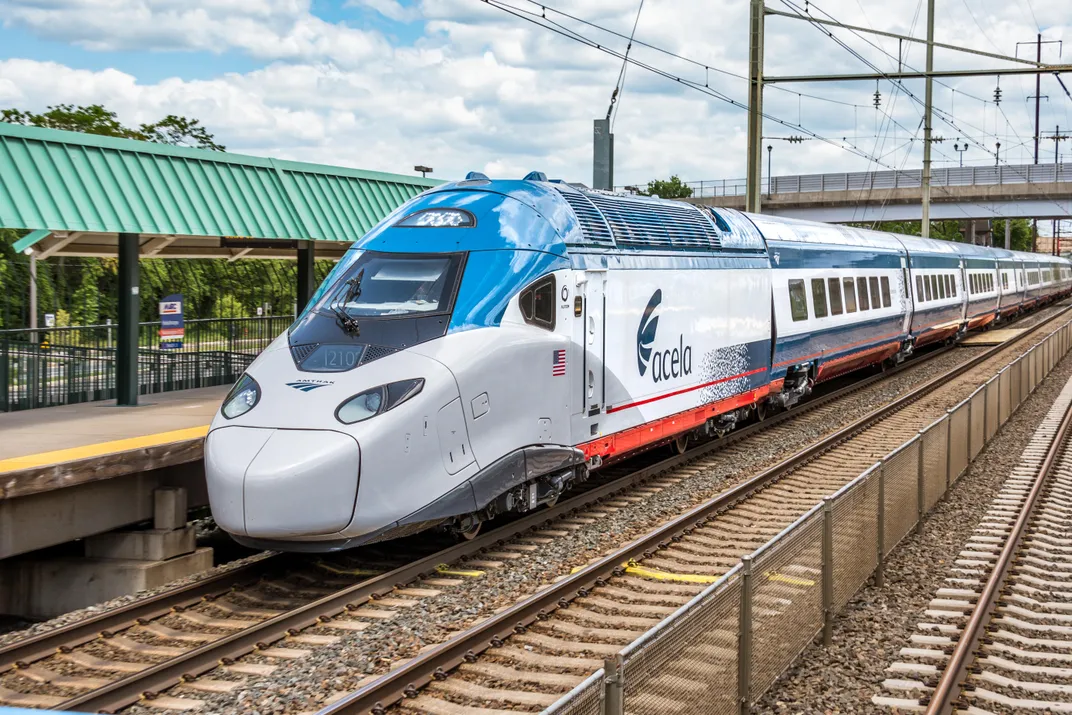
In preparation for the launch of the new Acela trains in 2022, Amtrak has already taken steps to upgrade its infrastructure to allow for increased track capacity—in other words, more trains, more frequently—as well as to improve ride quality and overall reliability of the system. Efforts are focused on the south end of the NEC, including the construction of new high-level platforms, as well as the rehabilitation of existing platforms, plus resurfacing and other track updates between Baltimore and Washington. The 30-mile stretch between the two stations is a relatively small section of the overall Acela route, but it accounts for one of the most congested and delay-prone areas in the Northeast rail system. By introducing these latest upgrades to capacity and ride quality, and bringing three-track capacity to the New Carrollton, MD station to allow for more operational flexibility, the Acela of the future assures greater reliability and comfort at high speeds—which means, importantly, the ability to consistently transport passengers to their destinations safely, and on time.
Inside the cars, passengers will also find updated amenities with 386 spacious seats that boast personal outlets, USB ports and reading lights, along with cutting-edge, real-time onboard information to keep riders apprised of the train’s location, speed, and any conductor announcements along the way. Going a step further, Amtrak is also committed to introducing enhanced safety systems that include newly integrated handles into seatbacks, grab bars throughout the train interiors to allow for safe passage when moving between or among cars, and secure “gap fillers” between trains to better enable movement during transit.
These enhancements will benefit the entire Acela route with increased efficiencies in 2022 and beyond. As part of Amtrak’s commitment to sustainability, the rail system is committed to using 40 percent less energy per passenger to do it. The new Acela trains will include recycled leathers and materials throughout passenger cars, and Amtrak will also offer a new food and beverage program on the trains with an expanded recycling program.
Customer Experience Improvements on the Northeast Corridor
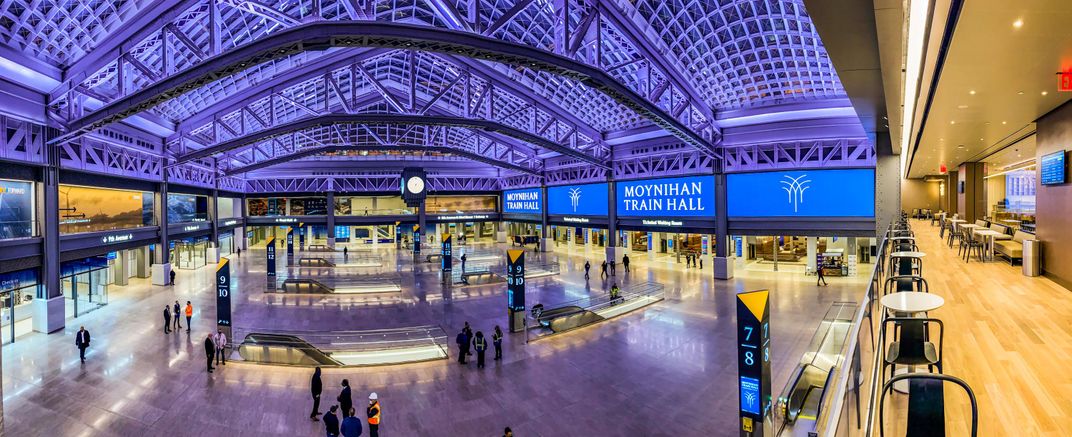
Travelers through New York’s Penn Station were undoubtedly accustomed to the transit hub’s bustling concourses and tracks that seemingly never slept. But this longtime hub of rail activity has evolved through a dramatic new partnership between Amtrak and Empire State Development, expanding the nation’s busiest train station across 8th Avenue and into the historic James A. Farley Post Office building, which itself is part of a transformational mixed-use redevelopment project. Dubbed the Moynihan Train Hall, the new passenger concourse is at the heart of the iconic building.
“It’s a destination within a destination,” says Harris of the dazzling new terminal, noting that while airports tend to be more remote transit stops along a traveler’s journey, the Moynihan station is “at the heart of it all, an entity in itself,”—right in the very heart of the city.
Designed by the same architectural design firm that was at the helm of the original Pennsylvania Station, Moynihan Train Hall houses enhanced passenger facilities designed to ease crowding. Featuring a sky-lit atrium that is roughly the same, impressive size of the Main Hall at Grand Central Terminal, the Moynihan Train Hall offers increased accessibility for passengers with disabilities, while also affording overall increased passenger circulation.
In Moynihan Train Hall and beyond, Amtrak is furthering its commitment to customer experience and usability by introducing a suite of amenities that are designed to make rail travel the best of all options, no matter the domestic route. Whether it is the ability to easily bring a bike along on many routes as part of one's commute or in search of adventure, or being able to travel with a small furry friend, Amtrak is innovating the future of rail travel to meet the demands of today—and the demands of years to come.
When compared to air travel offerings along similar routes, Amtrak offers competitive amenities, like seat assignments, mobile notifications, and paperless, contact-free eTicketing; but rail passengers enjoy so much more that commercial airlines simply can’t offer, such as spacious seats with generous legroom, capacity indicators that allow customers to preview how full a particular train may be prior to booking it, and even the promise of no middle seats—a sure crowd pleaser for anyone who has ever suffered such a travel fate by plane.
2035 Vision: Expanded Corridor Access
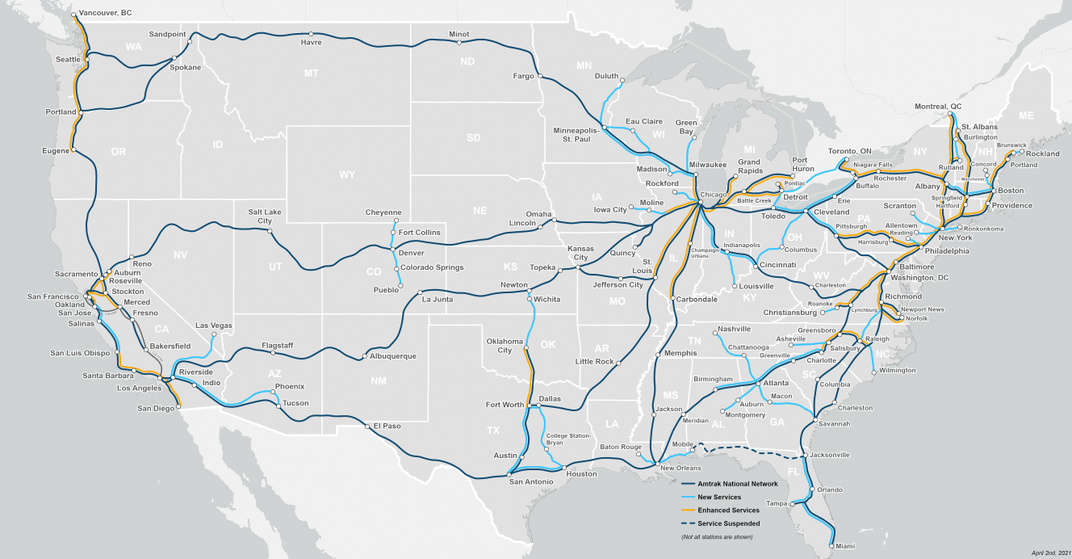
Just passing its 50-year mark, Amtrak’s contributions to railway innovation over the years have been myriad. But the future of train travel in America rests in its ability to position for continued transformation in the decades still to come. So just where is North American train travel headed in the longer term? By 2035, Amtrak’s vision is to increase capacity and offer customers more choice, with up to 30 new routes planned, along with additional trips planned across another 20 or more existing routes to increase transit capacity.
“It’s not only about the Northeast Corridor, although that’s a big piece of our story [in 2021],” says Harris. “There’s good news all around the country in terms of fleet.”
To wit, while over 32 million passengers relied on Amtrak in 2019, the rail giant is planning for an additional 20 million passengers in the coming years—a 63 percent increase—that will serve 47 of the 48 contiguous states. Such increases will address increased demand in growing cities such as Houston, Atlanta and Cincinnati, while also bringing new vital service to major markets like Las Vegas, Nashville, Phoenix, Columbus, and Wichita, where no Amtrak trains stop today. All the while, Amtrak is committed to ensuring cleaner air, not only for passengers but for the global community; less traffic along congested routes, as well as in emerging markets; and importantly, more equitable access to transportation for all Americans.
Sustainability In the Years Ahead

Comparatively speaking, rail service is a remarkably environmentally friendly means of transportation. “We’re already massively more efficient than the private automobile, which is what we’re really competing against,” notes Harris. In fact, travel via Amtrak can be up to 46 percent more energy efficient than traveling by car, and 34 percent more efficient than traveling domestically by air. Not content to rest on its past successes, though, for Amtrak, the future of train travel in America is all about embracing sustainability as the backbone of passenger rail service for generations to come. And it starts with a commitment to innovation, from implementing new technologies to educating employees about their workplace behaviors—those seemingly innocuous actions on an individual basis that can have a lasting environmental impact at scale. These areas of focus have combined to reduce Amtrak’s greenhouse gas emissions, since 2010, by more than 414,000 metric tons of CO2—that is, the equivalent of over 90,000 passenger vehicles driven in a year.
Other Amtrak sustainability initiatives include recycling seat cushions, re-lamping maintenance facilities for lower energy usage, and improving the fuel- and energy-efficiency of the overall fleet, producing less emissions. Just ahead, Amtrak is preparing to roll out a state-of-the-art, diesel-electric hybrid locomotive fleet—the ALC-42s—that is set to replace existing older locomotives on existing national network trains.
“It’s a bit like a hybrid car in that it has a fossil fuel power plant generating electricity, which drives electric motors inside the locomotive,” explains Harris. With this new fuel-efficient technology, coupled with track enhancements nationwide, trains will open up the doors of domestic travel to more people than ever before.
As we look to the future, Amtrak is also singularly focused on climate adaptation—that is, incorporating a variety of climate considerations and vulnerabilities into planning, and adjusting both engineering and design with an eye toward resilience and long-term sustainability. This will be critical in the face of increasingly frequent and costly weather events nationwide. It is proactive initiatives such as these that have helped earn Amtrak Headquarters a LEED Silver certification, as well as a Gold Level of APTA Sustainability. Such recognition further proves that Amtrak is well positioned for innovating the future of rail travel—now, and in the years ahead.
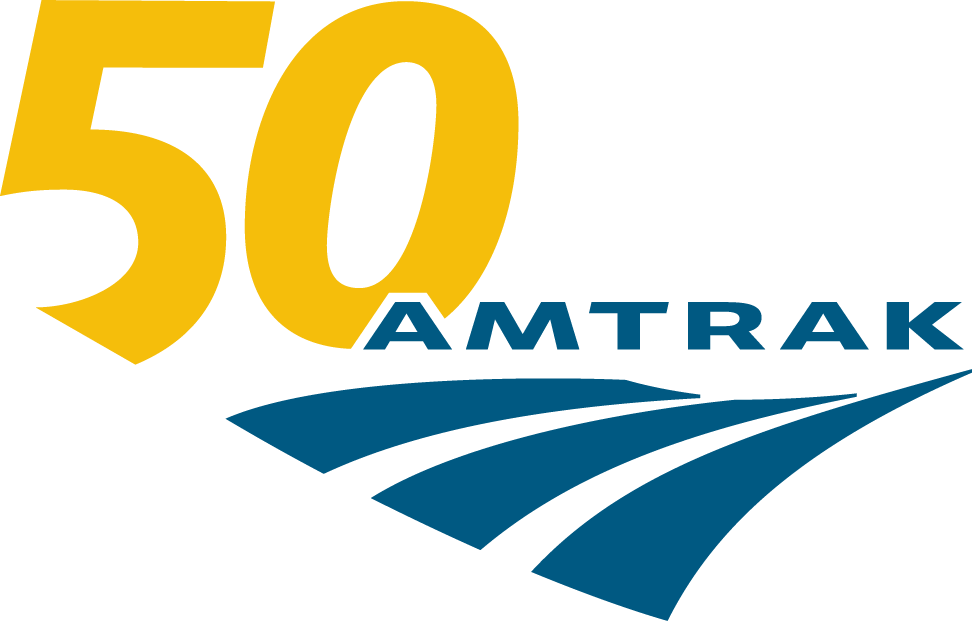

/https://tf-cmsv2-smithsonianmag-media.s3.amazonaws.com/filer/bc/54/bc547d15-39b9-4339-8f80-b9de4d8277b9/acela.jpg)